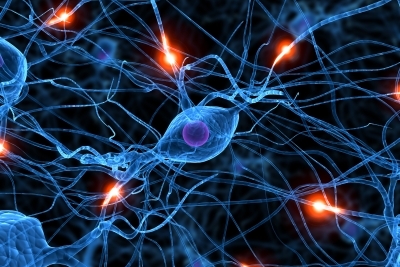Battle of the Brain Theories
Reed psych prof will act as referee in high-stakes showdown between two leading models of consciousness.
Prof. Michael Pitts [psychology] and two other prominent neuroscientists will referee a groundbreaking contest to investigate one of the oldest and most immense questions in the natural sciences: the neural basis of consciousness.
“It’s as fundamental as looking at black holes and the origins of the universe,” he says.
Researchers have proposed several competing theories of consciousness over the past few decades, and each has found some degree of experimental support. But figuring out how to test the theories against each other has proven extremely difficult.
In March 2018, Dawid Potgieter of the Templeton World Charity Foundation convened a workshop designed as a “structured adversarial collaboration,” where major proponents of two leading theories of consciousness—global workspace theory (GWT) and integrated information theory (IIT)—came together to debate their ideas.
In the middle of the debate, Prof. Pitts walked up to a whiteboard and sketched a rough idea for an experimental design where the two theories would predict different outcomes. Researchers Lucia Melloni of the Max Planck Institute and Liad Mudrik of Tel Aviv University joined in, and started making suggestions. A few hours later, the three of them were asked to lead the project, which has since been funded by a $5 million grant from Templeton to the Max Planck Institute, and then shared among the three principal investigators and eleven other labs.
None of the three investigators subscribe to either theory; they will collaborate with proponents of both GWT and IIT on an advisory committee to determine how data will be collected and analyzed. Having key supporters of both theories involved in the decision-making process will help ensure that each theory’s predictions are being properly tested and will make it harder for them to back out of the competition.
Details of the group’s agreed-upon plans will be uploaded to the open science framework (OSF), and submitted to a top journal in their field as a registered report for the whole world to see before the research formally begins. The members of the advisory committee will not collect data themselves, and their data-analysis protocol is designed to minimize inherent bias. Two years after the data is collected and analyzed, the entire dataset will be made public.
Designing experiments for this competition is difficult, Pitts says, because “the two theories overlap quite a bit, but our project is trying to focus on where they do not overlap.”
The project will generate an enormous treasure-trove of high-quality brain data that could ultimately help doctors around the world shape treatment for patients who are behaviorally unresponsive, like those in comas.
Students working in Reed’s SCALP Lab, namely Andrew Kyroudis ’19 and Kevin Ortego ’18, developed and conducted many of the pilot studies for the project. “We’re on the front end,” Pitts says. “Once the design is finalized, we pass it along to six other labs with access to more sophisticated brain recording tools than we have here at Reed.”
Pitts describes the intention of this competition as “to kill one or both theories,” but adds that while he is unsure that either will be definitively disproved, both theories have a good chance of being critically challenged. It’s expected to take three years for the experiments to be conducted and the data to be analyzed before a verdict is reached.
Tags: Academics, Awards & Achievements, Cool Projects, Editor's Picks, Institutional, Professors, Research
